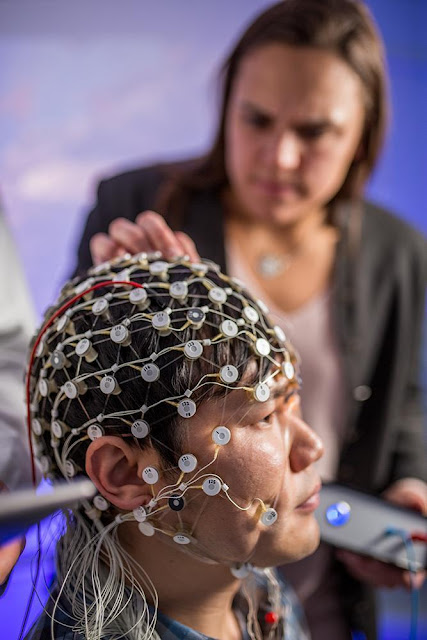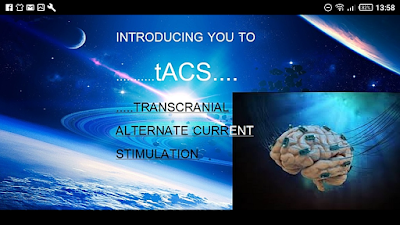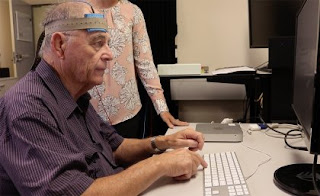First demonstration of Real-Time Brain Mapping in a Web Browser
Here, Intheon CTO Christian Kothe (left) wears the Cognionics “Quick-20″ 19-channel dry wireless EEG system, while CEO/CSO Dr. Tim Mullen (right) navigates his brain on a smartphone. All computation is carried out in real-time on the NeuroScale cloud platform. The lightweight web application is built on the NeuroScale API, utilizing just one of numerous possible pipelines for neuroimaging, biosignal processing, brain-computer interfacing, and cognitive state assessment. NeuroScale is the world’s first cloud API platform enabling developers to easily integrate state-of-the-art neurotechnology into any internet-enabled application. Anytime, anywhere. Interested? Apply for the Beta program at www.intheon.io ! Technical Stuff In this example, we demonstrate the most famous of brain rhythms: localized 8-12 Hz alpha (posterior dominant rhythm) power and cortical network activity when the subject closes and opens eyes. Increased alpha activity is associated with blocking of inpu


